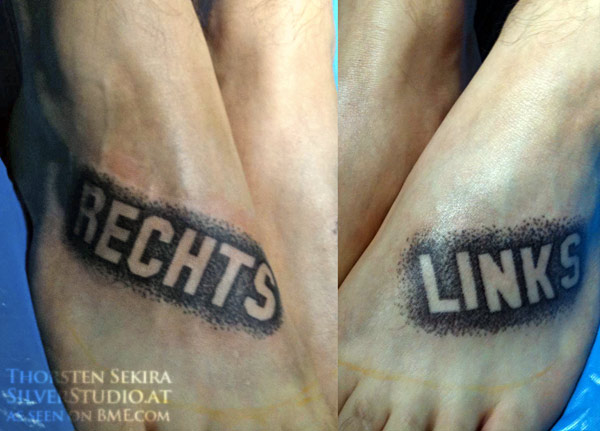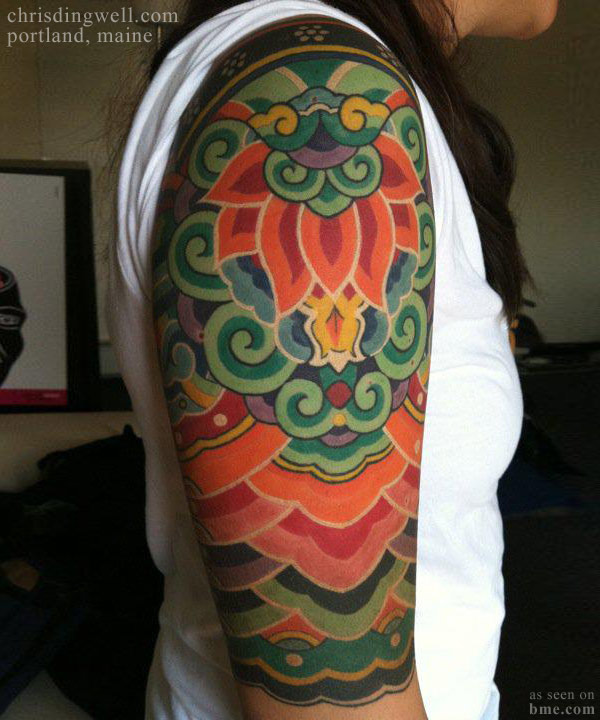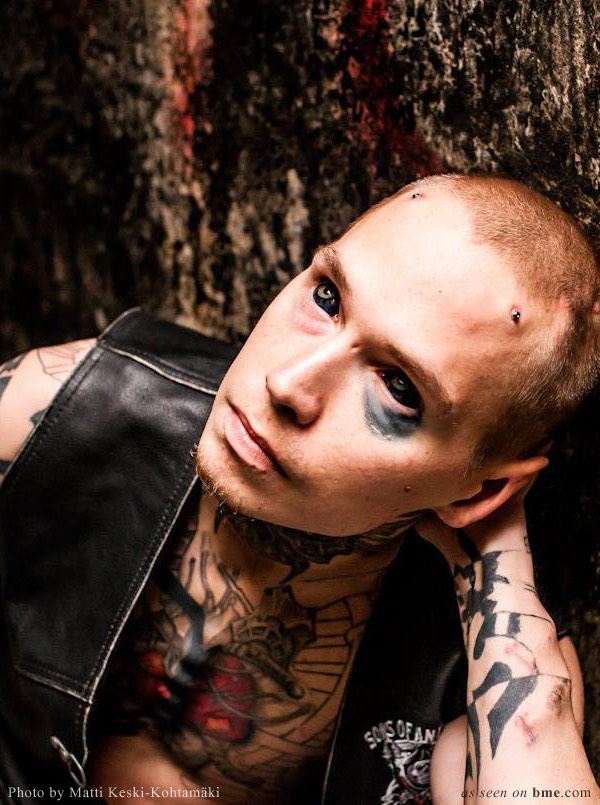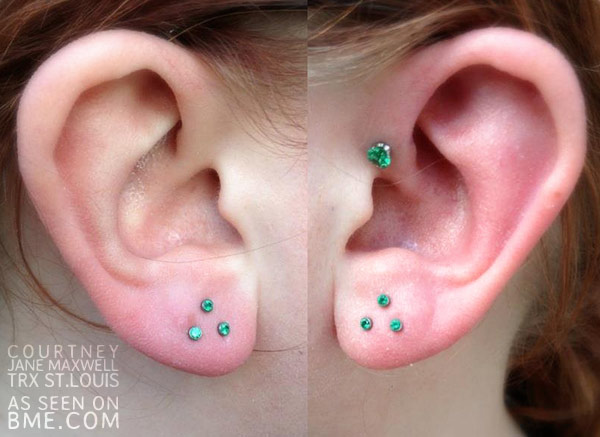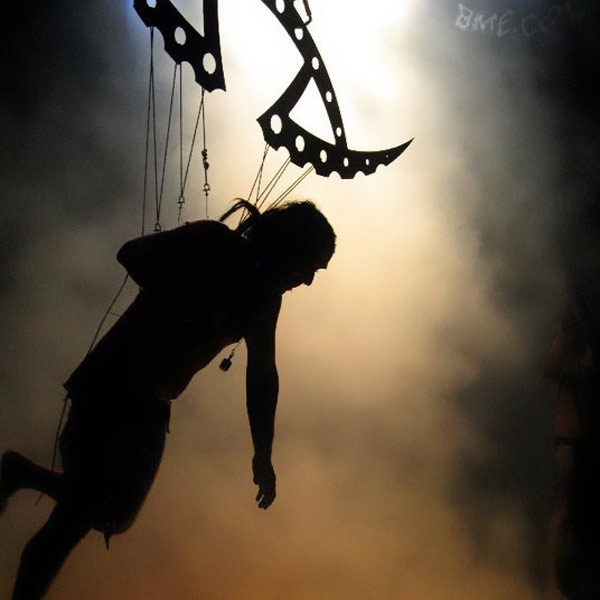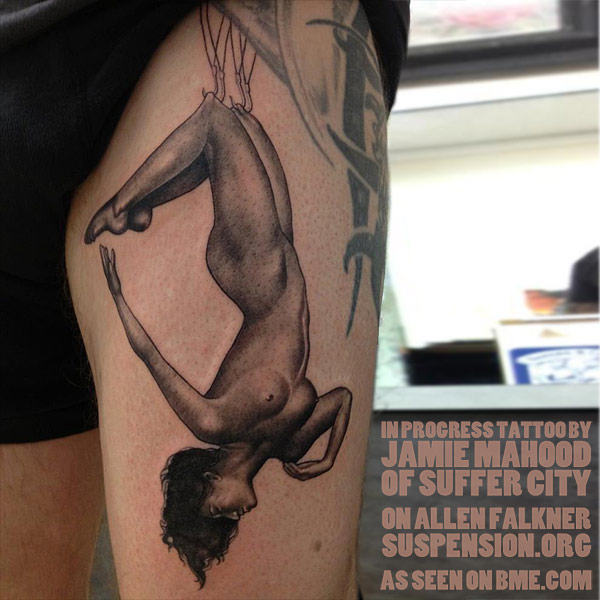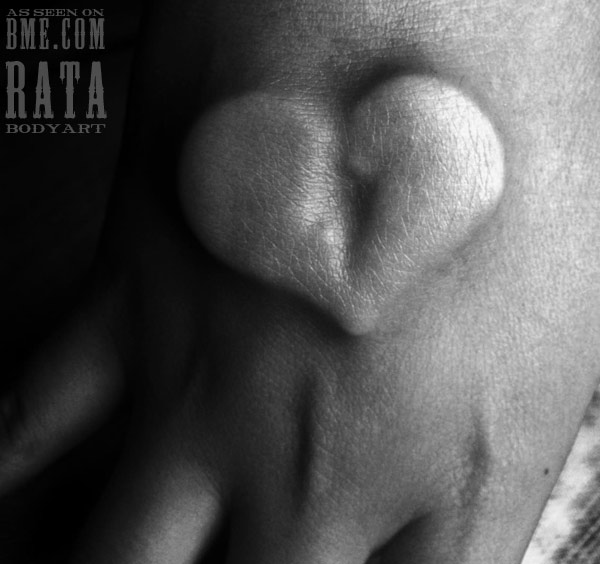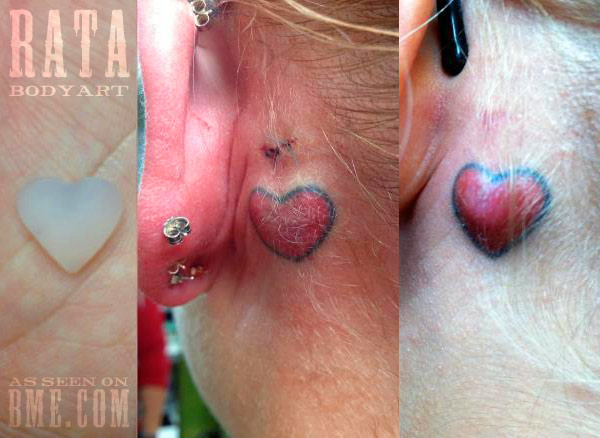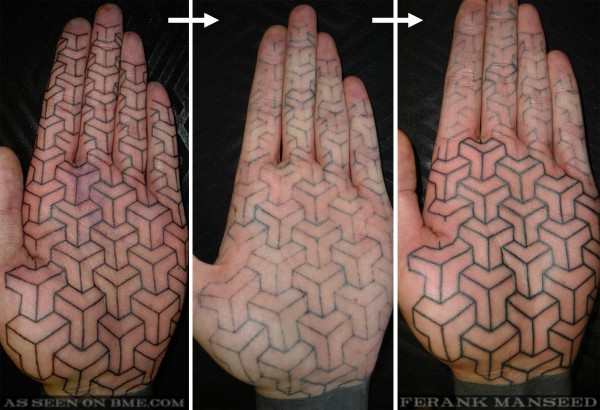Over five years ago I posted a photo of this incredible full-back hanya mask skin removal scarification by cross-spectrum body modification master Thorsten Sekira, then at Modified World in Munich, Germany, but now at Silver Studio (silverstudio.at) in Vienna, Austria. As is not surprising, the piece has healed evenly and without complication. Given the chaotic nature of the background, it’s impressive that it stands out as well as it does — and if you compare the picture posted in 2007 with these two pictures (posted a short while apart, as you can tell because the one on the right has additional tattooing), the wearer has been slowly filling in the background with ink, keeping the hanya mask as negative space so the scar will continue to grow more prominent as their body art evolves.
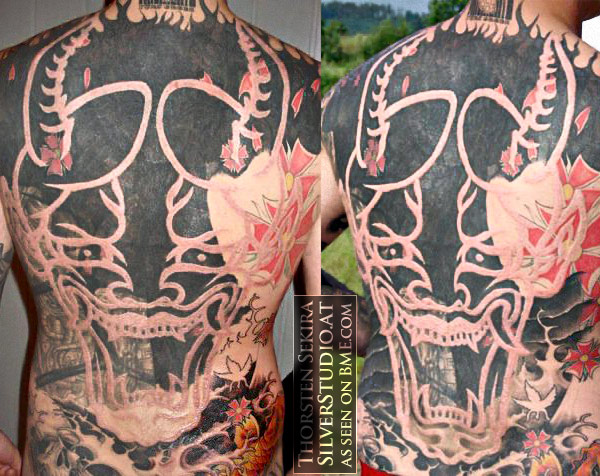
I’m only giving you a tiny glimpse into his large body of work, but another related scar that Thorsten did is this Kirin (a deer-like dragon for lack of a better introduction to its rich and complex mythology which you can search out for yourself), on untattooed skin this time, and using more traditional cutting rather than heavy-lined skin removal. In these photos it is of course healed, and again, you can see that it is nice and consistent, even though it’s on skin that experiences significant movement and abuse and can be quite difficult to get ideal results on.
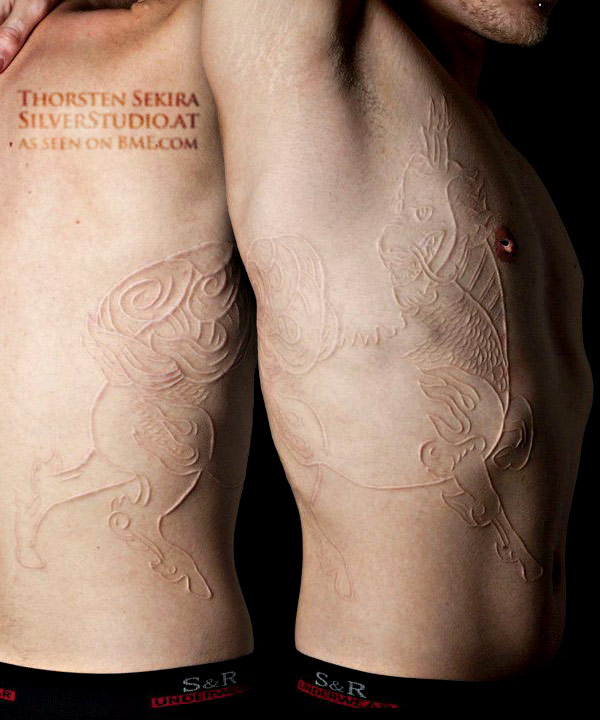
As I mentioned, Thorsten is one of those guys that’s capable of anything — piercings, suspension, implants, ear reconstruction, scarification, and even tattooing. I say “even” tattooing because it’s not uncommon to find piercers who are into other mods, but most of the time there’s a real line between the tattoo world and the rest of the modification world. To be honest, it’s probably one of our biggest problems as a subculture. On that note I want to finish off with a silly little tattoo he poked — I’m sure it’s obvious, but this is German for “right” and “left”. For those forgetful, always-getting-lost sorts I suppose? Unfortunately it only works in sandals with carefully chosen strap designs. Oh, and I like the subtle typographical touch of slightly deviating the baseline of the text so as to make it look like it’s been shaken (or stomped) a bit out of place.
